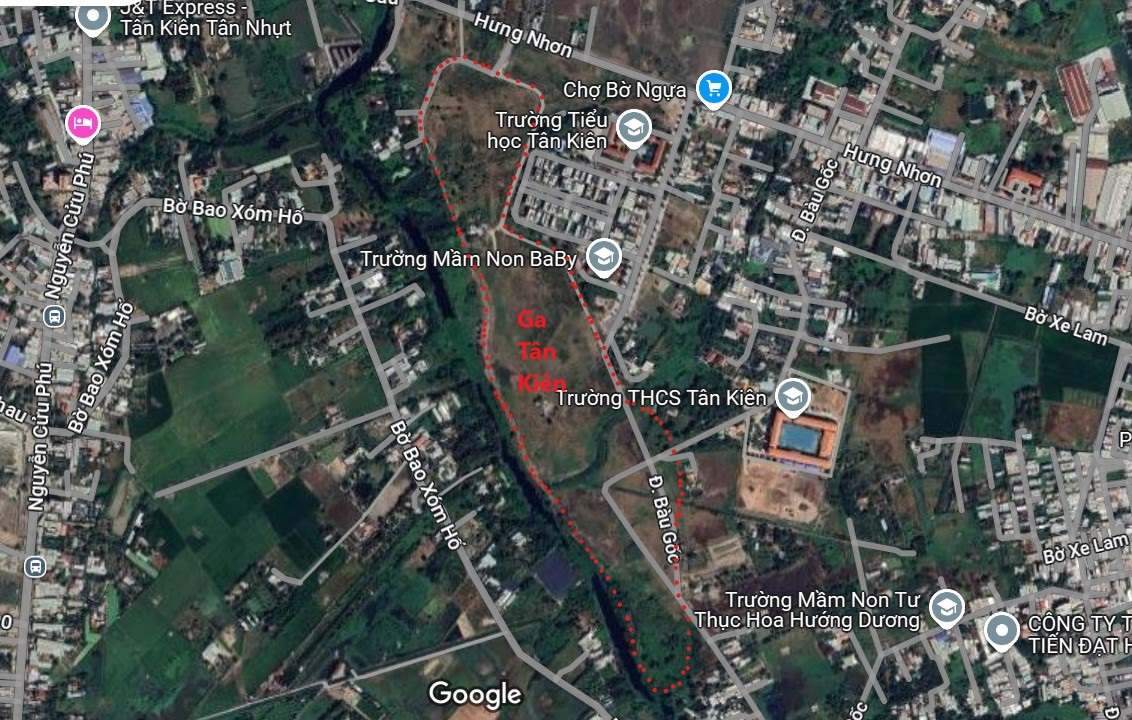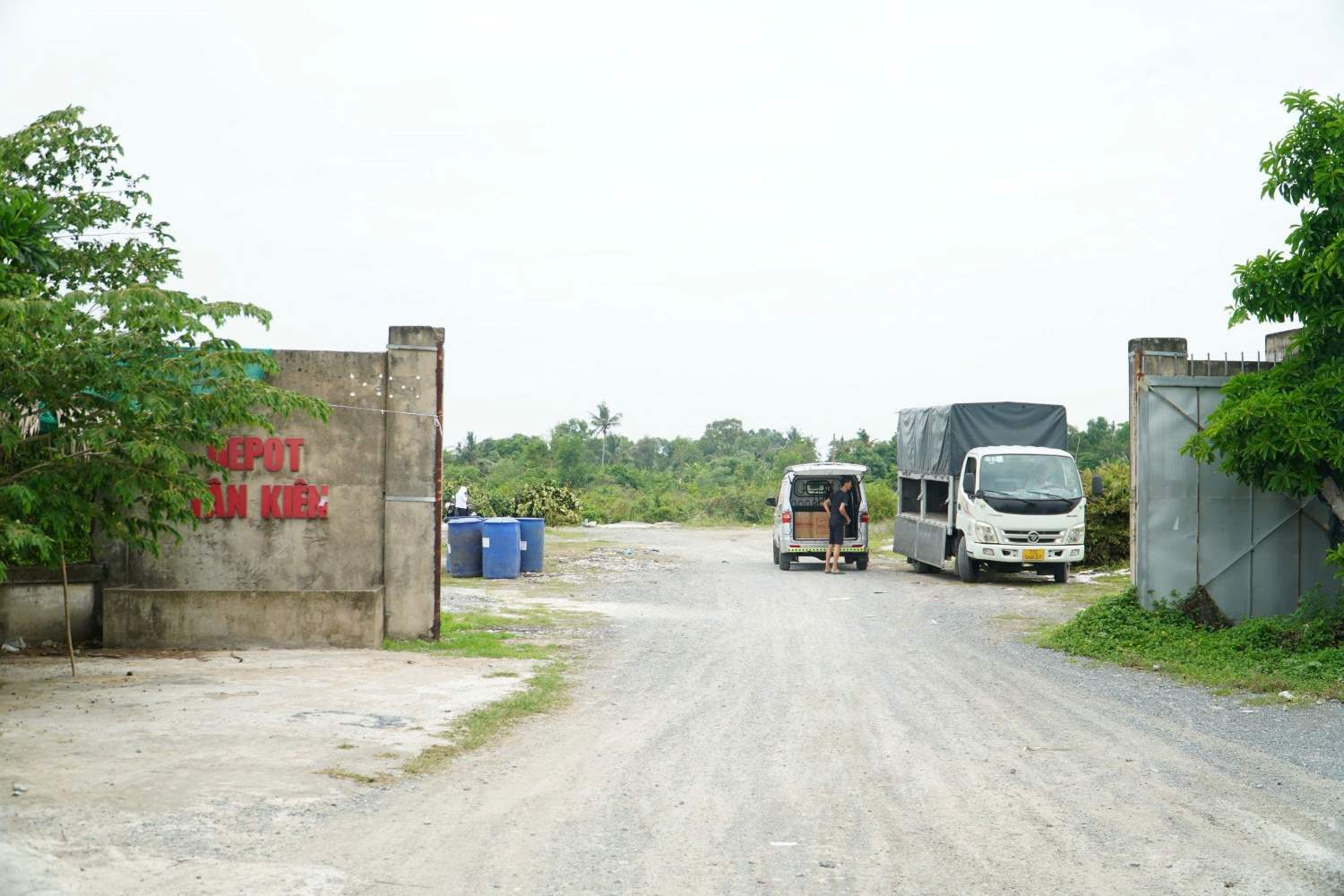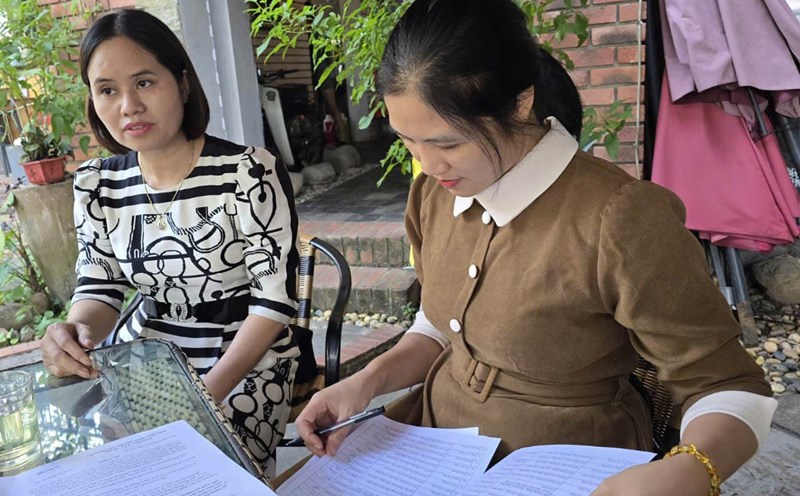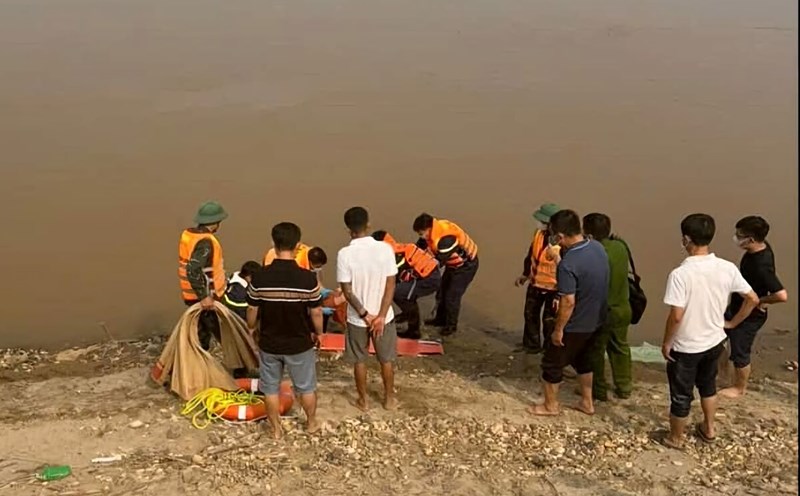Tan Kien Station is planned to be the operation and maintenance center of Metro Line 3 extension (Ben Thanh - Tan Kien) and the station of the Ho Chi Minh City - Can Tho high-speed railway line.
The 314-hectare land around the station is currently identified as one of 11 areas that Ho Chi Minh City has chosen to pilot the public transport-oriented urban development (TOD) model in the 2024-2028 period.

However, according to the records, the current situation of the area still has many shortcomings. The land area of more than 26 hectares used for Tan Kien station is abandoned, overgrown with weeds. The station depot has no one to look after it, many items are degraded, while some households in the clearance area have not yet been relocated.


Outside, the area around Tan Kien station includes main roads such as Hung Nhon, Nguyen Cuu Phu, Bo Bao Xom Ho, Duong Dinh Cuc, National Highway 1,... with small residential areas interspersed with agricultural land. This creates potential for urban development, but also requires careful preparation in terms of planning and investment.

The Ho Chi Minh City People's Committee has assigned relevant agencies to develop a plan to determine detailed boundaries, land legal status and urban development functions in this area. According to the plan, this work will be completed from the second to third quarter of 2025.
The detailed planning will then be adjusted from the second to fourth quarter of 2025, before selecting an investor in 2026.
With this orientation, the urban area around Tan Kien station will become one of the key projects, making the most of public transport advantages for socio-economic development.

According to Resolution 98, Ho Chi Minh City is allowed to pilot the TOD model, allowing the use of public investment budget for compensation, support and resettlement in areas near metro stations and Ring Road 3 intersections. This helps the city to be flexible in adjusting construction density and technical infrastructure targets.
The TOD model is expected to optimize land value around stations, creating a source of capital for reinvestment in transport infrastructure.
At the same time, increasing population density near key traffic points will encourage people to use public transport, reduce pressure on personal transport and promote sustainable urban development.











